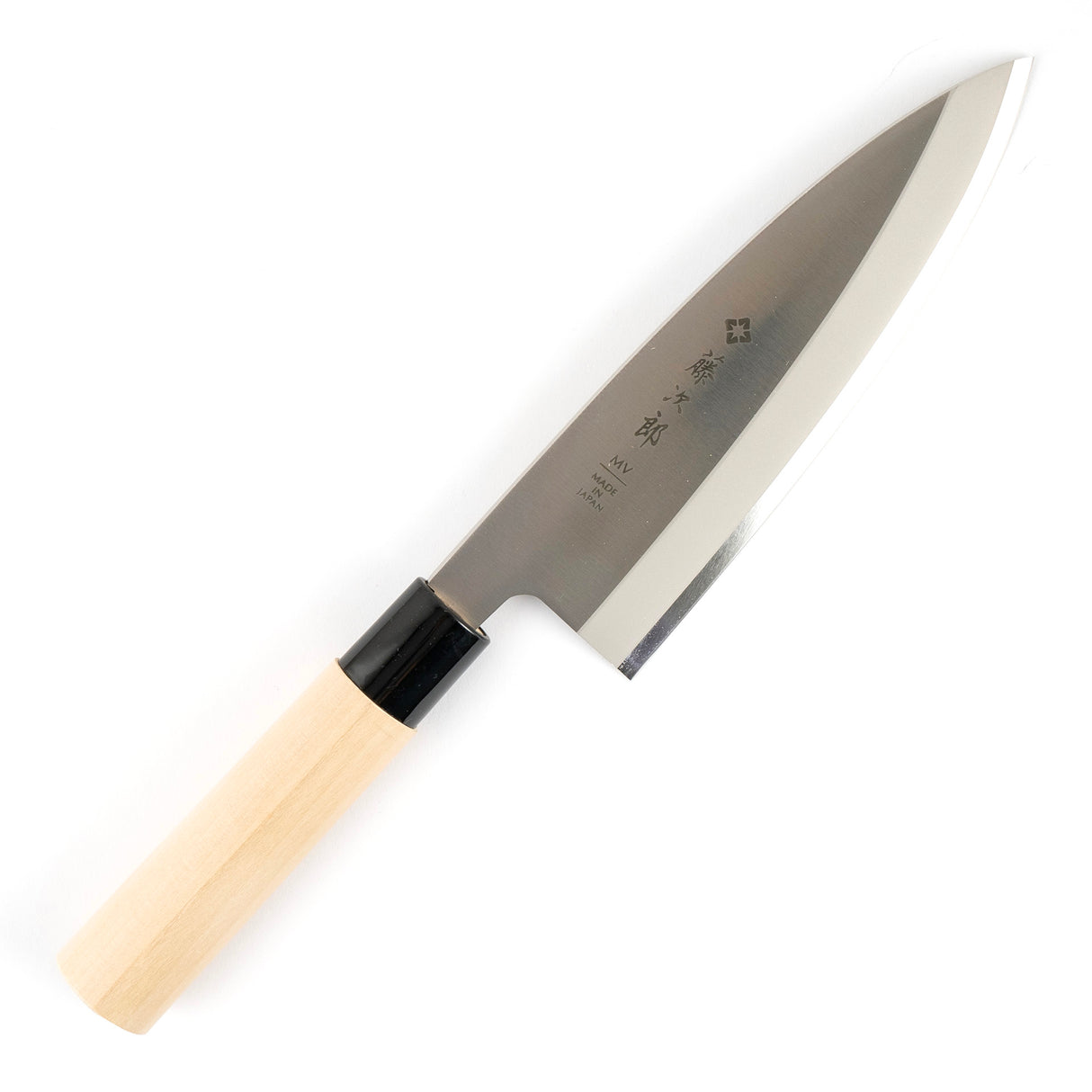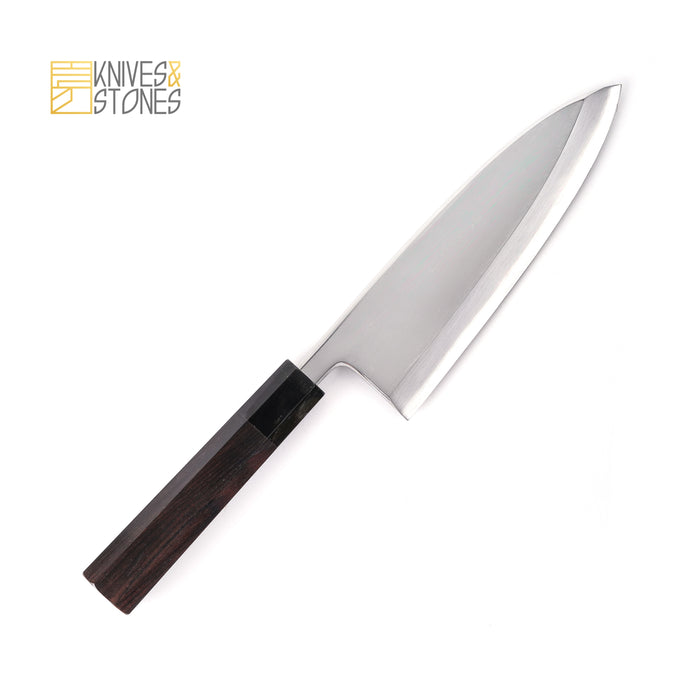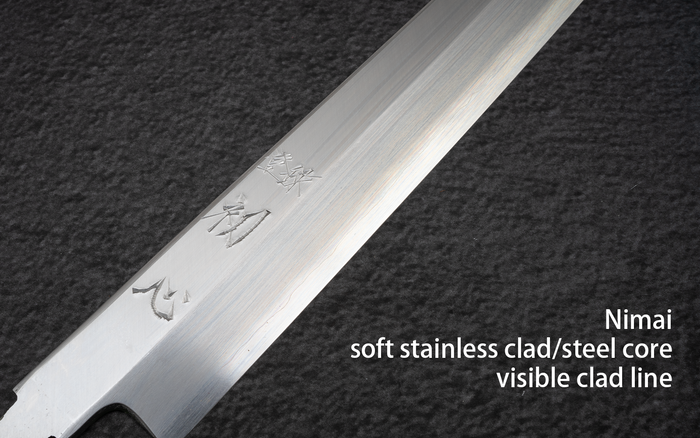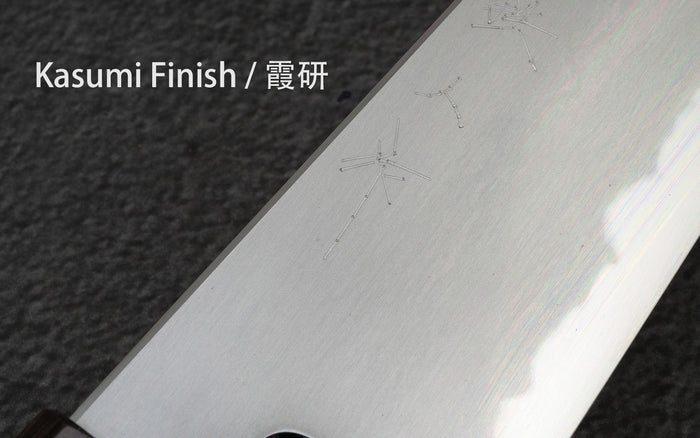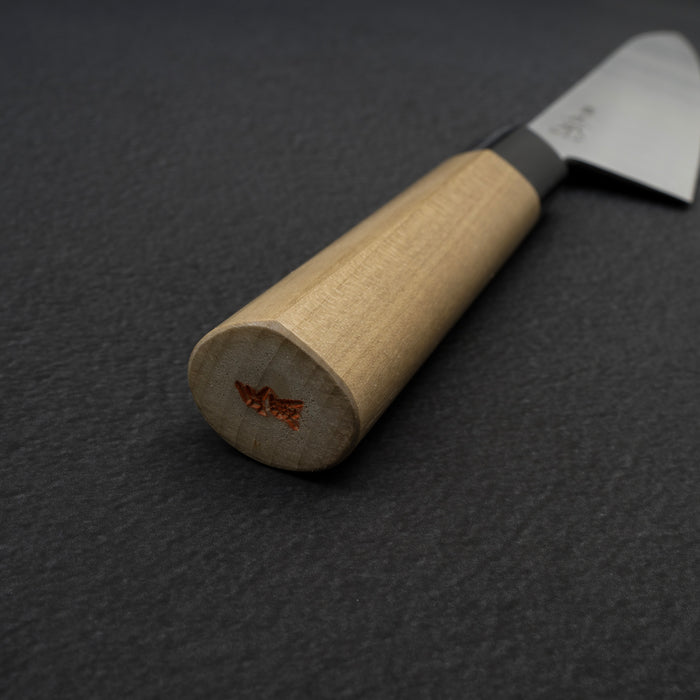Tojiro | SKU:
TOJI_F1055_DE180
Tojiro MV Stainless Deba 180mm F-1055
Regular price
$169.95
Unit price
/
Unavailable
Tojiro MV Stainless Deba 180mm F-1055 is backordered and will ship as soon as it is back in stock.
Couldn't load pickup availability
Detailed Specifications
| Line | Tojiro MV Single bevel |
| Profile | Deba |
| Bevel Type | Single Bevel |
| Weight | 275 g | 9.7 oz |
| Edge Length | 180 mm | 7 3/32″ |
| Steel | MV (Molybdenum Vanadium) | Stainless |
| Blade Construction | Nimai - Stainless Clad |
| Hardness (HRC) | 54 - 60 |
| Surface Finish | Kasumi |
| Handle | D Shaped Ho Wood Black Ferrule |
| Region | Tsubame |
| Best for |
|

| Pros | Cons |
|
|
|
Care Instruction
- Don't cut hard things! Japanese knives are brittle so bone hacking is a NO NO!
- Wash with neutral detergent after use, and wipe dry;
- Please don't wash knife with dishwasher, it will damage the wood handle;
- Be careful not to leave the knife close to a heat source for a long time;
- It is a lot more dangerous to cut with a blunt knife than a sharp knife!
- It is best to sharpen a Japanese knife regularly on a waterstone.

